|
SP Railroaders' PagesxxxSP IndexxxxSP San JosexxxWx4 indexxxxcorrespondence: wx4org@yahoo.com
|
||
|
History San Jose: |
Many of these images come from History San Jose's Ernie Kiesel Collection of Southern Pacific Photographs. The 1935 Rucker incident is photographically covered in Part 6, page 2: Historical Events - Wrecks. To view a list of W. J. Baumeister photos and his biographical data, go to the collection's Index of Names + Biographical Data page. The same applies to other engineers mentioned in the text. |
|
|
|
Engineer William J. Baumeister was an inveterate photobomber long before anyone had heard of the term. During the Depression, W. J. began horning in on group photos of pensioner group at every opportunity, and thenceforth nearly until his death, there was hardly ever a union get-together that did not display photographic evidence of his attendance. He no doubt felt entitled due to his decades-long role as the Brotherhood of Locomotive Engineers Division #161 "griever", the fellow who represented union members' grievances with management. Grievers pretty well ran the local union show, so he likely had no compunctions about interjecting himself into whatever scene he so chose. At Rucker siding in 1935 he arguably went a bit too far. | |
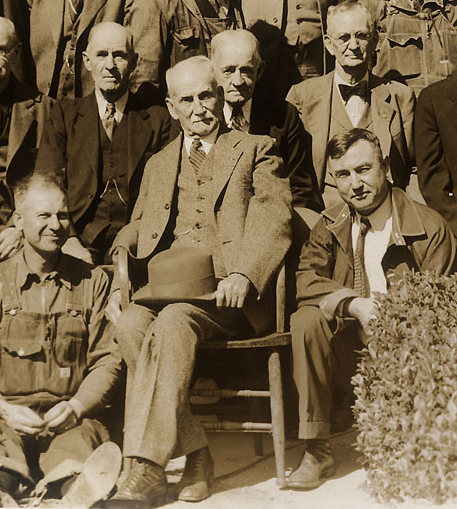
William J. Baumeister, photobomber, in his natural element: This imaged clipped from a Kiesel Collection photo, depicts Baumeister (bottom right) sitting among a crowd of pensioners about a month before the Rucker incident described below. The occasion likely was the annual birthday party for "Dad" Kelsey (seated, with hat), a 1919 graduate from service who turned 86 in 1935. But wait! Baumeister had a co-conspirator: Engineer Billy Jones. (left) William Jones was a true celebrity in the railroad world, one who is still remembered today as the creator of the Billy Jones Wildcat Railroad and as a person whose wide circle of friends included Walt Disney. He matriculated to SP from subsidiary South Pacific Coast in January, 1907, when the latter was undergoing its last phase of conversion from narrow gauge to standard. Baumeister probably had done the same about four months earlier, although evidence that he worked for SPC is lacking. By 1935, both men had sufficient working years under their belts to retire, but they still were about 15 years short of retirement age. - History San Jose photo #1978-152-3-080, in Kiesel Part 4, Social Events, Page 4 |
||
| Few people outside of employees have ever heard of Rucker siding, which was situated roughly three miles north of Gilroy on Southern Pacific's Coast Division. The surrounding township of the same name was carved out of an old Spanish land grant in 1893, and its namesake school was erected in 1894. In 1896-97 SP installed a siding and a small passenger depot, and other than a post office serving surrounding farms, that was about it. | ||
|
xxxxxxxxxxxxx
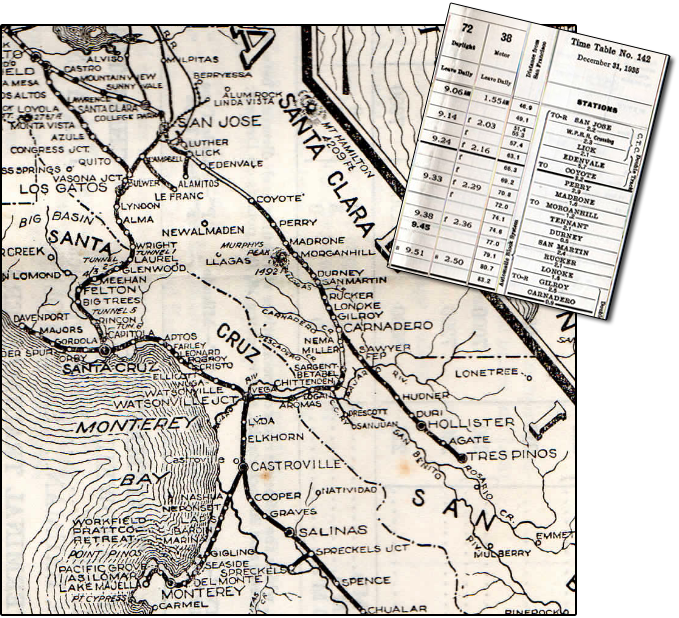 |
||
| Rucker was the site of at least two wrecks. The first came early - on January 9th, 1908 - when the lead tender truck of Engineer Ed Sipple's (see Kiesel Index) eastbound (geographically southbound) Sunset Express locomotive derailed on a defective switch frog. Three people died as it's two lead cars rolled down an embankment onto Monterey Road, while four more cars derailed, but remained upright. (news article here) A week prior, the Del Monte Limited had derailed at Morgan Hill. | ||
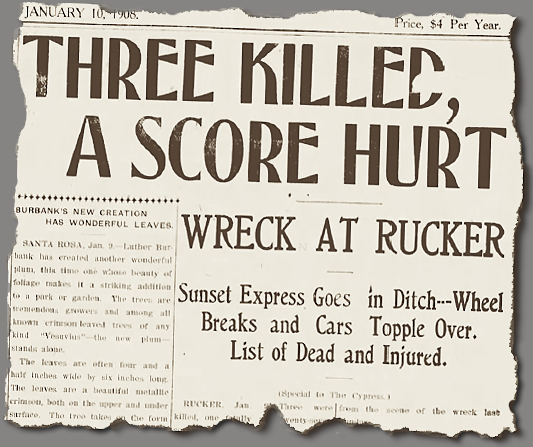 |
||
| Rucker's existence thereafter remained unremarkable until a gloomy November 16th, 1935 day, when the eastbound (geographically southbound) Daylight Limited plowed into a farm truck at Rucker Avenue crossing. The locomotive turned sideways, flipped onto its left side, coming to rest 150 feet away - at the site of the 1908 tragedy. The tender and trailing passenger cars all remained upright. One of the truck's three occupants died, but crew / passenger injuries were mostly minor. | ||
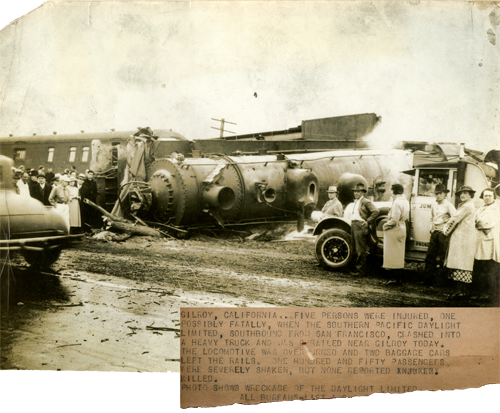 wire service photo - Wx4 Collection |
||
| Cornelius Hoogendyke (see Kiesel Index) was the unlucky veteran engineer in charge of the locomotive. He, Fireman T. Taylor (see Kiesel Index) and Engineer Baumeister all jumped before the loco overturned. When the cameras were pulled out, Hoogendyke made himself scarce, but not Taylor and Baumeister. The pair, in what seems to have been part of an outpouring of relief over escaping death, gave rather out-of-place performances for the photographers. Taylor's behavior was literally over the top, as we see in the below photo of him hanging from the "top", formerly the side, of the engine cab. |
||
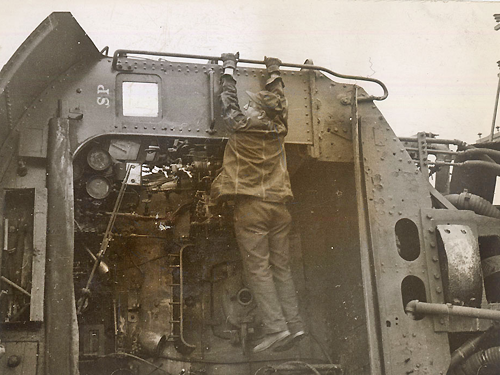
History San Jose photo #1978-152-3-270 |
||
|
Baumeister was a passenger on the locomotive who apparently was studying the San Francisco - San Luis Obispo run to qualify as a passenger engineer on the territory. He responded to the incident as a true photobomber would - inappropriately - by planting himself in front of the wrecked locomotive for picture takers. One wonders what Hoogendyke thought, assuming that he was aware of his peer's antics. |
||
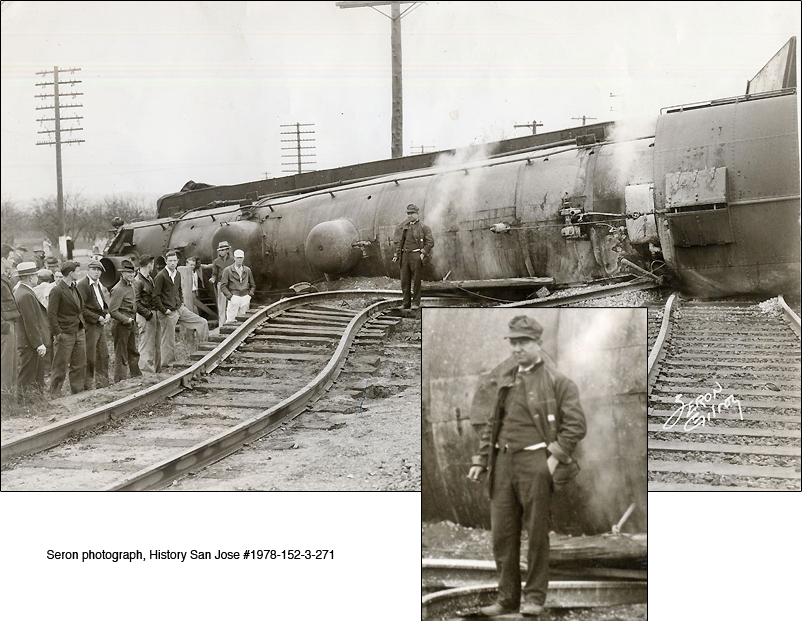 |
||
|
This is a minor rap on what was on the whole an amusing little frailty. His photobombing tendencies suggest that he wanted recognition, something that likely in part motivated him to hold the griever's job for so many years. His griever's job as a representative of so many men, along with his railroad job, certainly occupied most of his waking hours, leaving little room for anything else. But the many photos of him as a guy who handled his heavy responsibilities in good form; as a congenial guy who enjoyed his two jobs and his fellow engineers. Given that he spent several decades as griever in what fundamentally was an elected position, his regard for his peers was reciprocal, even if he was inclined to engage in a little photobombing. He was entitled to it, they probably said.
|
||
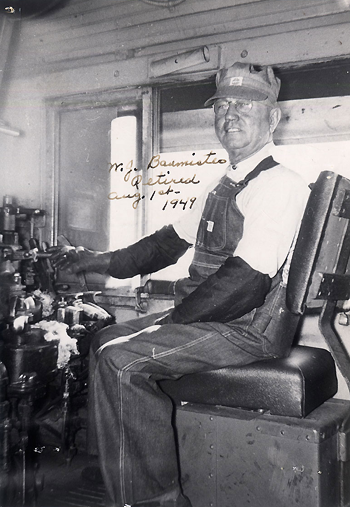
This may be W. J.'s retirement photo, taken in the cab of the Noon Daylight, his regular run for most of the time since the 1935 accident. History San Jose photo #1978-152-3-010 |
||
|
More Rucker
|
||
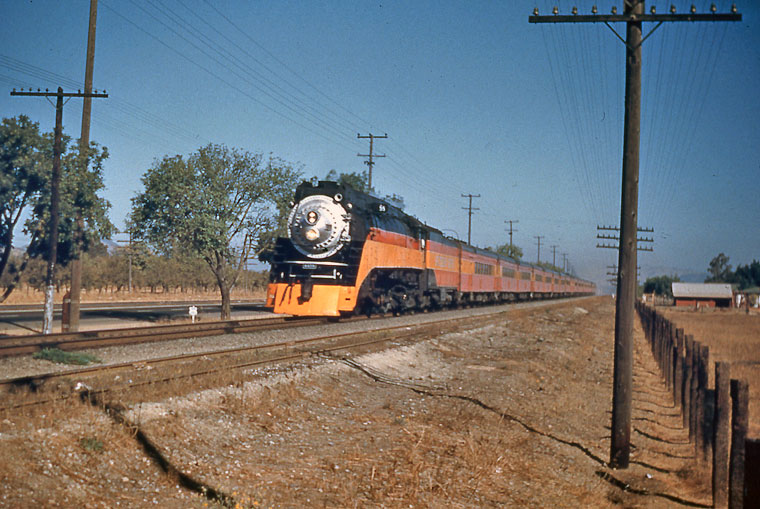
Coast Daylight #98 with loco #4436 near mid-siding at Rucker on September 10, 1954 |
||
|---|---|---|
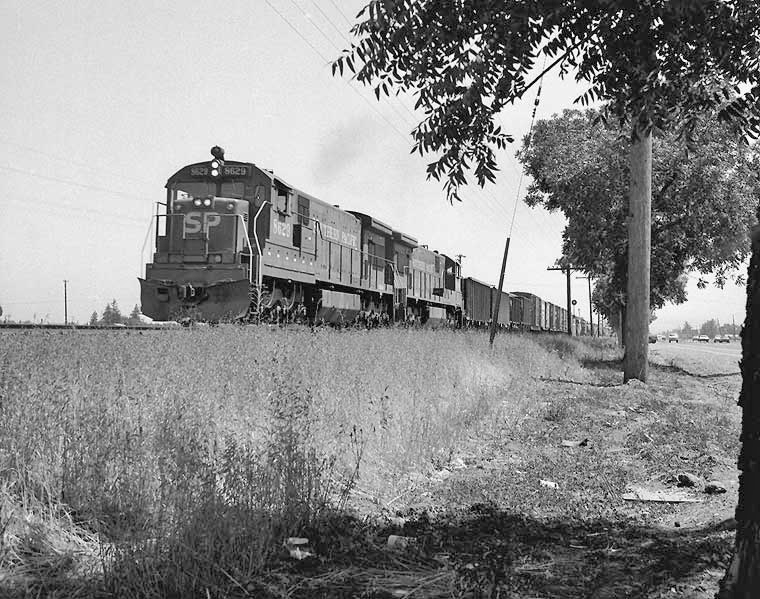
Rucker in the early 1970's: The signal in the distance stood at the west (north) end of the siding. Masten Avenue crossed the tracks just this side of the signal. Monterey Highway is at right. Wx4 photo |
||
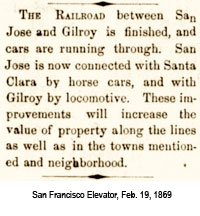 |
||
